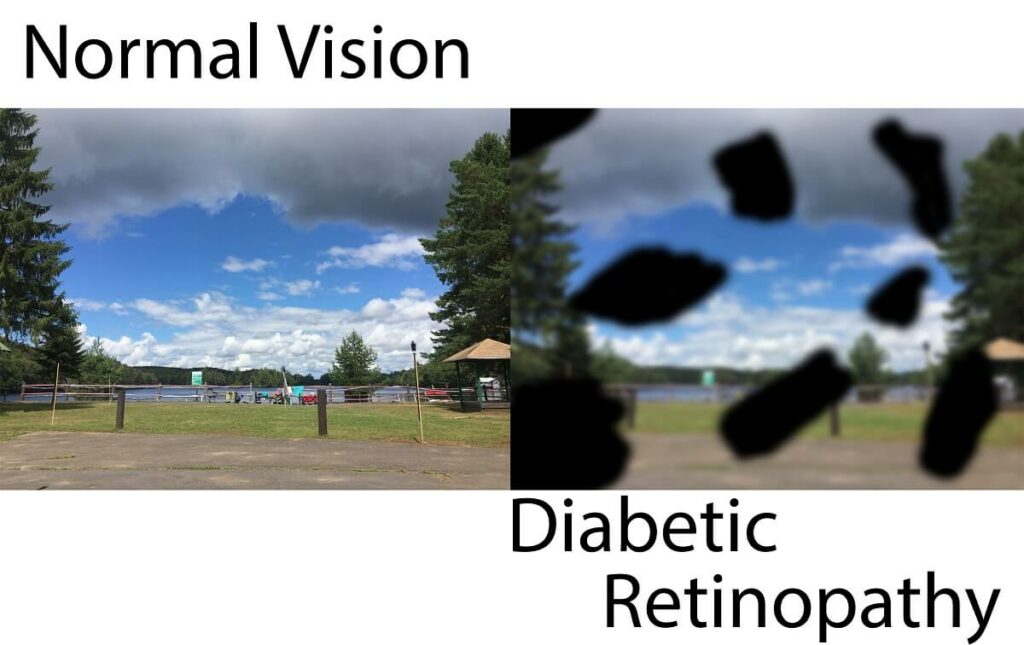
Nearly 10% of the Population is at Risk for this Disorder
According to the CDC, over 29 million Americans, or 9.3% of the population, are affected by diabetes. Diabetic Retinopathy is a condition that occurs only in people who have diabetes and it can be a serious threat to their vision.
Types of Diabetic Retinopathy
There are two types of diabetic retinopathy, Nonproliferative Diabetic Retinopathy (NPDR) and Proliferative Diabetic Retinopathy (PDR). With NPDR, the eye will not develop new blood vessels and damaged vessels will leak blood and fluid into the eye. When this happens, your tissue swells and your vision will become blurred and cloudy, which will eventually lead to permanent damage if you sugar levels are not maintained.
PDR, which is the more advanced form of the disorder, is caused by circulation problems within the eye. The retina will become deprived of oxygen and fragile blood vessels will likely leak blood into the vitreous, which is the gel-like fluid in the back of the eye.
Causes and Symptoms
When an individual’s blood sugar levels are not in target range, it can be detrimental to your vision. People who have diabetes for more than 30 years will typically develop signs of retinopathy. Even though there are no early symptoms of diabetic retinopathy, you should receive a comprehensive eye exam once a year. The doctor will check for swelling, leaking of blood vessels, scarring, abnormal blood vessels, and retinal detachment. If you are starting to experience blurred or distorted vision, then you are already in the later stages of the disorder.
Risk Factors
Although everyone with diabetes is at risk for developing diabetic retinopathy, several factors can expedite the process. As we mentioned in previous sections, individuals who do not control their blood sugar levels and people who have had diabetes for over 30 years will be at higher risk for the disorder. In addition to the aforementioned factors, high blood pressure, smoking, high cholesterol, and pregnancy have the ability to assist in the process for diabetic retinopathy.
If you have diabetes and want to receive a professional evaluation of your eyes, CABVI employs two optometrists that are here Monday through Friday.
